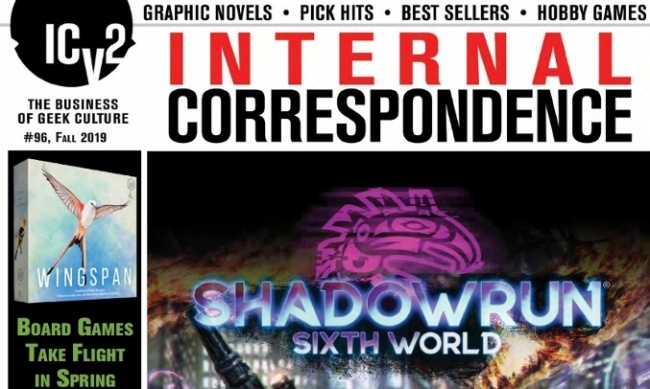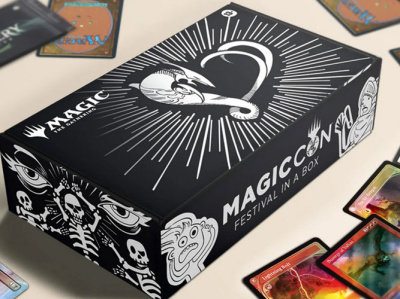While graphic novel sales overall showed a healthy 11% increase in sales in 2018, a deeper dive into the numbers by ICv2 reveals that sales varied widely by the type of content, influencing the broader comics and graphic novel trends by channel and format.
To do this analysis, we took year-end reports from NPD BookScan on sales through the book channel (primarily book chains, major online retailers, and mass merchants), and the monthly sales numbers ICv2 derives from sales indexes on the top several hundred graphic novel titles published by Diamond Comic Distributors, the primary distributor to comic stores, each month and broke them down by title into four content categories: Superhero, Author, Manga, and Kids.
We then looked at the change in sales for each of those categories between 2017 and 2018 in both channels and found remarkable differences. The two biggest movers were Superhero and Kids titles, in opposite directions.
As we’ve been reporting for years, Kids graphic novels are on a tear, with Dav Pilkey’s bestselling Dog Man series joining the Raina Telgemeier oeuvre (both from the Scholastic Graphix imprint) in the bestseller ranks and setting new records. Growth was much faster in the book channel, although Diamond’s sales of Kids graphic novels were also up on much smaller numbers (although the actual sales of Kids graphic novels in the comic store channel are probably understated by those numbers because many comic stores with substantial Kids graphic novel businesses buy from other sources in addition to Diamond).
Manga sales were also up across channels in 2018, and where they grew fastest was a big surprise. Our analysis showed manga sales in comic stores up dramatically. Manga sales in bookstores were up a more modest percentage, based on this analysis. A much larger percentage of manga sales take place in the book channel, and that continues to be true, but comic stores were showing some renewed interest in 2018.
Superhero titles also moved in concert across channels, although in the opposite direction. Our analysis showed superhero graphic novels down both in comic stores and in the book channel. A big part of this trend is undoubtedly due to the poor sales on periodical comics in 2017; when comics that didn’t sell very well are collected, the graphic novels often don’t sell that well either.
Author titles were also down across channels. The continuing decline in sales of the top two franchises, The Walking Dead and Saga, helped drive this trend.
Content is king, and the content trends described above were what determined overall sales, as well as sales by format and channel. With big growth in Kids graphic novels and Manga, which have historically been sold primarily through the book channel, the book channel grew double digits while comic store channel sales of graphic novels declined slightly. Conversely, the decline in appetite for superheroes meant that comic stores, where superheroes are the dominant content category, felt the effect more than the book channel.
Content preferences also drove format trends: graphic novels were up dramatically, driven by those Kids graphic novel and Manga titles, while comic periodical sales, which are dominated by Superhero and Author titles, were up just slightly. It’s a good sign that comic periodical sales were up; that may portend better graphic novel sales trends in 2019.
And all of those trends add up to solid growth in the overall market in 2018 (see "Comics and Graphic Novel Sales Hit New High in 2018"), a trend that’s positive even though it wasn’t equally positive for all players. At the very least, the fact that there are burgeoning numbers of readers at the bottom end of the age curve is a great sign for the future.
The "Superhero" category includes titles published by Marvel and DC, along with any other titles based on corporate-owned content, such as titles tied to movie, TV, and character licenses.
The "Author" category, on the other hand, includes content owned by and associated with its creators. The Walking Dead is the biggest title in this category, and Image is the biggest publisher of Author titles.
"Manga" includes content created for a Japanese (and to a limited extent, Korean) market that’s translated for English readers. We include manga titles for younger readers here, rather than in Kids.
"Kids" includes content published for a middle-grade or younger market.
These are the same four categories we use for our Top Graphic Novel Franchises chart:
Top 10 Author Graphic Novel Franchises – Spring 2019
Top 10 Kids/Tweens Graphic Novel Franchises – Spring 2019
Top 10 Manga Franchises – Spring 2019
Top 10 Superhero Graphic Novel Franchises – Spring 2019
For the full-length version of this article, with percentage change numbers for all categories and channels, see "Pro: Big Split in Graphic Novel Sales in 2018 – Full Report."
Sources for the information include NPD BookScan, which collects weekly point-of-sale data on print books from over 16,000 locations including e-tailers, chains, mass merchandisers, independent bookstores, and more. NPD BookScan covers approximately 85% of the U.S. trade print book market. Some publishers classify titles that are primarily text, or art books, as graphic novels; we remove those titles from our analysis.
The analysis also incorporates information released by Diamond Comic Distributors, the largest distributor of English-language comics and graphic novels in the world, on sales to comic stores.

Kids and Manga Up, Superheroes and Author Titles Down
Posted by Milton Griepp on July 29, 2019 @ 11:40 am CT
MORE COMICS
Debuting in Direct Market Before Bookstores with Titles by Tim Seeley, Ram V, More
August 18, 2025
The new imprint, which includes titles by Tim Seeley and Ram V, will launch in the direct market before going to the book channel.
Special Horror Week Showbiz Round-Up
August 18, 2025
Horror is the biggest thing in showbiz, and we round up news in the genre here.
MORE NEWS
Contains a New Array of Promos
August 18, 2025
Wizards of the Coast will place Festival in a Box - MagicCon: Atlanta, a Secret Lair drop for Magic: The Gathering, onto DTC preorder.
Podcast-based RPG Now on Preorder; New Deets on Boxed Set Contents
August 18, 2025
Renegade Game Studios will release Welcome to Night Vale RPG into retail.








